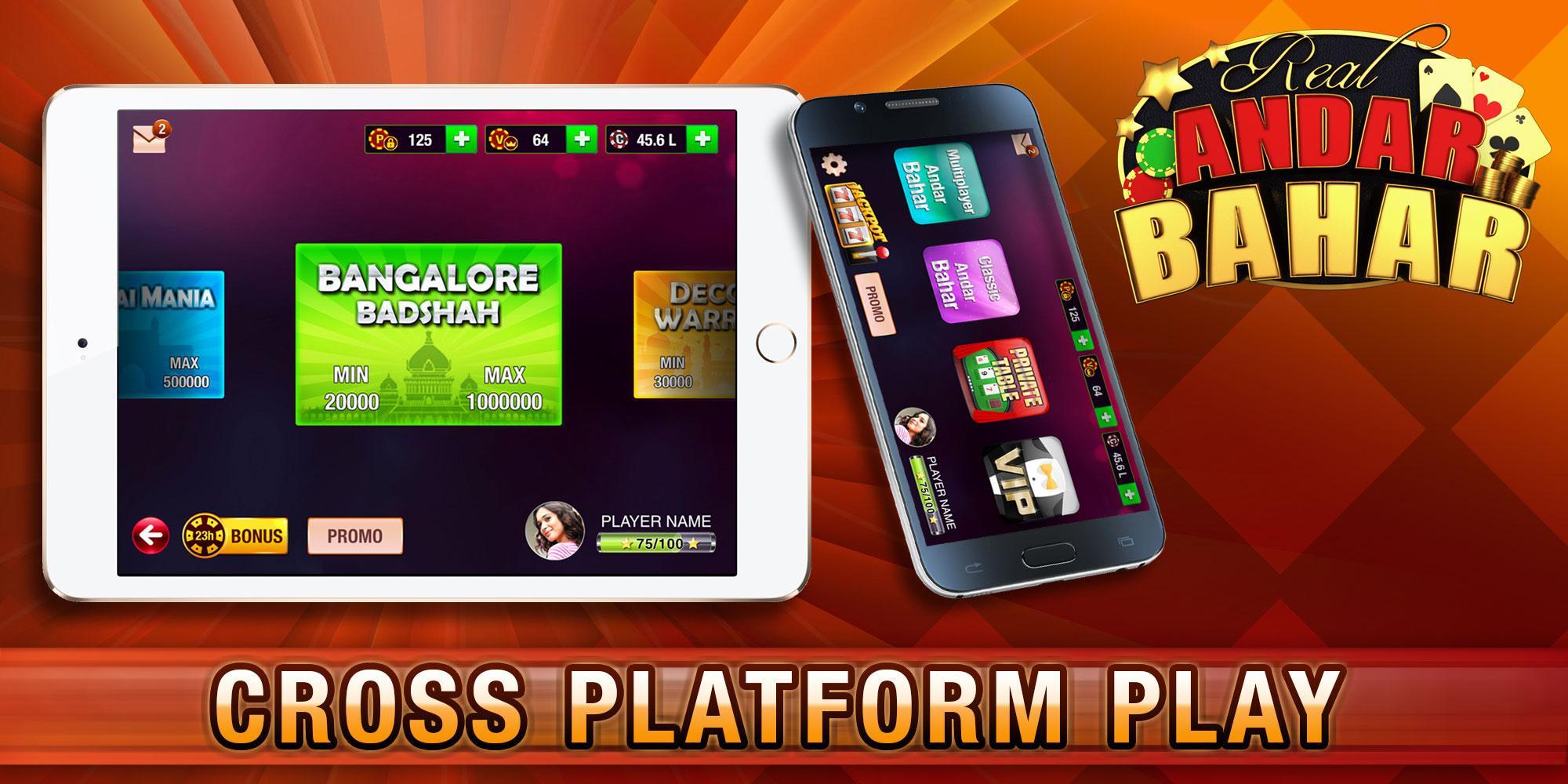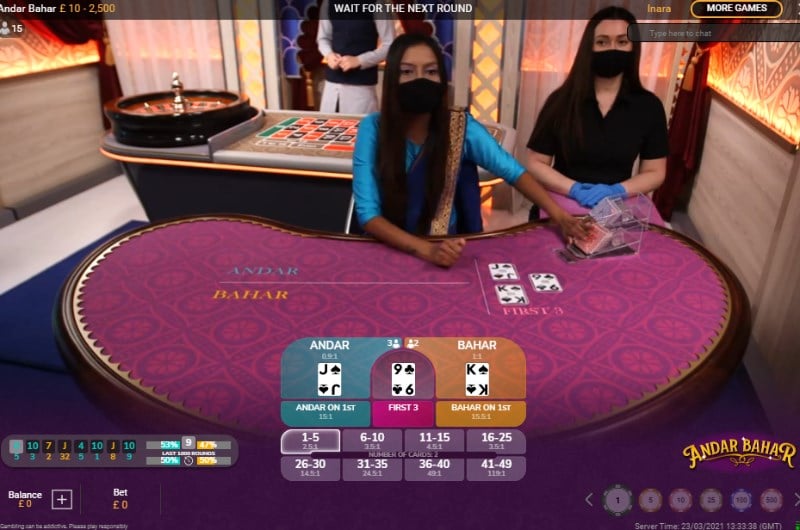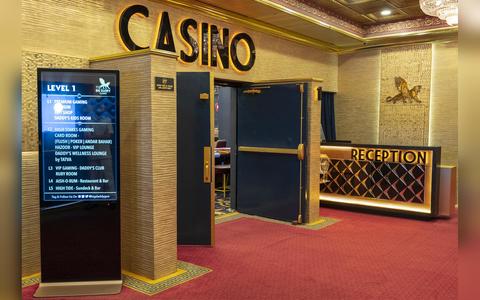Andar Bahar Cash Game
- You will find various games to play in Andar Bahar ranging from Craps, Baccarat, Roulette, and Video Poker. Each of these games offers players the opportunity to participate in exciting, real cash games with progressive jackpots. Andar Bahar is a top destination for poker players because it’s.
- Andar Bahar: Best Online Cash Games In India There are a number of online cash games in India but only a select few hold mass appeal in the land of 1.3 billion people. The games that are the most popular are usually games that have their roots in the Indian subcontinent or are specifically customized towards the preferences of Indian players.
The Andar Bahar game has been around for many centuries and is a popular game to play when families and friends get together in India. It’s played using a standard.
Andar Bahar, aka Katti, is a popular Indian Poker game and it is just as fun as it sounds. It is a traditional Indian betting game which originated in Bangalore many centuries ago. Together with Teen Patti (3 cards) and Rummy, Andar Bahar occupies the first few places of India’s most played card games. The game is extremely simple to play and it is certainly indulging as you have a 50/50 winning chance!
What is Andar Bahar?
This is a game that is exclusive in India. Just like the other culture, Indian has developed a vibrant scene of entertainment. Poker is widely played in different regions of India and the variations and creativity in the games are comparable to their western counterparts.
How to play Andar Bahar?
Andar Bahar means “inside” and “outside”. This is highly related to the way that the game is played. The game can be played by at least one player and one dealer. You can enter any Andar Bahar game room as long as it is not full. It is a short and quick game and you can leave or join the room any time after a game is finished.
On a game table, there are 2 independent zones, “Andar” and “Bahar”. This is where the game gets its name from! The dealer will be shuffling the deck of Poker, and then draw 1 card. This particular card will be put in the middle of the table, between the “Andar” and the “Bahar”. Watch out! This is a very important step as the card is deemed as the Joker. You then start making a bet. What is the bet for? It is to guess where the next Joker will be, “Andar”? Or “Bahar”? After your first bet, the dealer will draw 2 cards, putting 1 on “Andar” and 1 on “Bahar”. Then it’s time for your next bet. This time, you can bet on the same side as your first move, or bet on the other side. After all players placing their bets, the dealer will start dealing cards. 1 on “Andar” and 1 on “Bahar”, and so it goes on until the next Joker card comes up. The winner will get double of their betting amount if they bet on the correct side and lose their bet if it is at the wrong side.
This is an example of how this works.
In a room, there are 2 players, Ishaan and Amar, and 1 dealer. At the start of the game, the dealer will draw 1 card from the deck. In this case, a diamond 8 is drawn. The card will be placed in the middle of the table, facing up. So 8 is the Joker in this game. The dealer will then give the players plenty of time to make their first bet.

Ishaan bets 4 thousand on “Andar” and Amar bets 8 thousand on “Bahar”.
The dealer then draws 2cards, it is spade 4 on “Andar” and Club King on “Bahar”. Now it is time for the second bet in which Ishaan skips betting and Amar bets 4 thousand on “Andar” this time.
The dealer keeps drawing cards, and finally the heart 8 appears on the “Bahar”.
For Ishaan, he loses in the game and the dealer will take his 4 thousand Rupees bet.Amar loses 4 thousand which he bet on “Andar” but he will get 8 thousand more from his winning bet on “Bahar”.
The game then stops and a new game will be started. Other players can join the table now before the start of a new game.

Once you make your bet on Andar Bahar, it is just unstoppable. As it requires no prior knowledge or skill, it instantly becomes how people entertain themselves.
Where can I find a good Andar Bahar Platform?
There are many platforms online that you can choose, but they are not always safe. Always pick a reliable and legal platform to load money in and make withdrawals after the games.
Teen Patti Cash provides a fantastic option for players around the world to enjoy a seamless and smooth experience. Here are a few advantages of using Teen Patti Cash:
100% secured
We know how you treasure your wealth and wish to amplify it with all means. Our platform keeps your money secured with our online security and SSL.
Strict fair play policy
Our gaming platform is as safe as a well-secured casino. We reject any fraud and foul play to ensure you a fun and smooth experience.
Popular among worldwide players
You are not alone in this online world. 5+ million players with the same passion as you gather around the gaming table from worldwide places. You can get connected with real players through the app!
Hot games and girls
Play like a boss! Our app runs well on different devices and our card dealers are all captivating. Play like in real life with the easy-to-use buttons and clear rules.
Get help as you need
Our support service is always there for you if you need anything, from game support to cash withdrawal help.
Besides the above, Teen Patti Cash gives you free cash as you register the account. You can use the cash as your first bets and try out your luck. Download Teen Patti Cash from its official download page or the app store on your device. Action now!
Introduction
Andar Bahar is an Indian gambling game that is said to have originated in Bengaluru (Bangalore) in the southern state of Karnataka, and it is also known in Tamil as Mangatha orUllae Veliyae. It is a game of pure chance in which the dealer places a card face up and the player bets on one of two piles: Andar (inside) or Bahar (outside). The dealer then deals cards alternately to the two piles until a card appears that matches the initial card. The pile where this matching card appears is the winning pile. In the 21st century Andar Bahar has become a popular game in Indian online casinos.
Katti, another pure chance game, is also described on this page. It also features bets on inside or outside, and for this reason it is understandably often confused with Andar Bahar but the mechanism of Katti is different.
Note. Gambling can be dangerously addictive. You can find information and advice on our Responsible Gambling page.
We would like to thank the following partner sites for their support:
A guide to Andar Bahar can be found at onlinecasinoguide.in, founded in 2019 and edited by Nikhil Patel, which provides independent reviews of safe and legal Indian online casinos and betting sites.
Gambling Times Magazine, founded in 1977 by Stanley Roberts and now published online, supplies gambling industry news, reviews casinos and betting sites and creates guides to casino games such as Andar Bahar and Blackjack.
At Luckydice.in, founded in 2018, chief editor Rahul Patel and his team provide an independent guide to gambling for people in India. The site features guides for games including Andar Bahar, online casino reviews and all the relevant legal information.
Players and Cards
A standard 52-card pack is used. The dealer operates the bank and there can be any number of players, who traditionally sit in a circle around the dealer. The players have nothing to do except place bets, watch the deal, and receive their winnings if successful.
Procedure
The dealer shuffles the cards thoroughly, cuts them and deals one card face up. This is the card that must be matched, often known as the 'trump card' or 'joker' though these terms are misleading. In normal English card game terminology a trump is a card that can beat any card of a different suit, irrespective of rank, and a joker is a wild card that can be used to represent any card the player desires. Therefore it seems better to call this first card the house card, or maybe just the middle card, since the two piles are sometimes dealt on either side of it.
Now the players place their bets on either of the two piles, known as Andar and Bahar, that the dealer will create. The minimum and maximum bets must be agreed in advance in a private game, and will be determined by the house in a casino game. In Hindi the words Andar and Bahar (sometimes written Baahar) mean inside and outside respectively, and in Tamil the two piles have the equivalent names Ullae (inside) and Veliyae (outside). This may be because in the traditional game the inside pile is the pile nearer to the dealer and the outside pile is further from the dealer. In online versions the layout may be like that or Andar and Bahar may simply be to the left and right respectively of the house card.
Many online versions of the game allow additional types of bet. These are described in the Variations section below.
The dealer now deals single cards face up from the remainder of the deck alternately to the Andar and Bahar piles. If the house card is black, the first card is dealt to the Andar pile; if the house card is red the first card is dealt to the Bahar pile. The deal continues until a card appears that matches the rank of the house card. Players who bet on the pile where this matching card appears win; those who bet on the other pile lose.
Payout
Clearly the chances are slightly greater that the first matching card will appear on the side where the first card was dealt, and the payouts reflect this. A successful bet on the side where the first card was dealt is paid out at odds of 0.9 to 1, while a successful bet on the side where the second card was dealt is paid out odds of 1 to 1 (evens). In other words, given that the colour of the house card determines where the first card is dealt:
- If the house card is black, a successful bet of 1000 on Andar pays 1900 (your bet returned plus 900 winnings) while a successful bet on Bahar pays 2000.
- If the house card is red, a successful bet of 1000 on Andar pays 2000 while a successful bet on Bahar pays 1900.
In fact the chance that the first matching card will appear on the same side as the first card dealt is close to 51.5%. From this it is easy to calculate that the house edge on a bet on side where the first card is dealt is 2.15% while the house edge on a bet on the side of the second card dealt is 3%.
Variations

It is apparent from the various descriptions of this game on the web that there are a number of variants. I would be particularly interested to hear from people who have taken part in private games in India, and can confirm what rules are most often used in the traditional offline versions of the game.
Some descriptions imply that it is not the house card but the first player card whose colour determines whether this first card is dealt to the Andar or Bahar pile. This modification does make the initial bet almost a 50/50 chance since the colour of this card is not known when the bet is placed. Possibly that is the motive for this rule, but despite it appears that the payout remains as 0.9:1 for winning bets on the side of the first dealt card and 1:1 for winning bets on the side of the second card.
| Number of cards dealt | Payout odds | House edge |
|---|---|---|
| 1 to 5 cards | 2 to 1 | 18.68% |
| 6 to 10 cards | 3 to 1 | 13.18% |
| 11 to 15 cards | 4 to 1 | 15.49% |
| 16 to 25 cards | 3 to 1 | 12.80% |
| 26 to 30 cards | 14 to 1 | 8.52% |
| 31 to 35 cards | 24 to 1 | 7.56% |
| 36 to 40 cards | 49 to 1 | 5.17% |
| 41 or more cards | 119 to 1 | 4.92% |
| House card prediction | Payout odds | House edge |
|---|---|---|
| 2 to 7 | 1 to 1 | 7.69% |
| 8 exactly | 11 to 1 | 7.69% |
| 9 to Ace (Ace high) | 1 to 1 | 7.69% |
| colour (red or black) | 0.9 to 1 | 5.00% |
| suit | 2.8 to 1 | 5.00% |
Andar Bahar Cash Game App
Online Andar Bahar Real Cash Game
Katti

Brief accounts of this game appear on several websites. The following is my current understanding of how it works, based largely on information from the people at GameRules, one of the sites that has a decription of Katti.
The dealer begins by dealing a row of 13 cards face up. Each of the players may choose any card in the row, and bet on 'inside' (Andar) or 'outside' (Bahar) for that card. When these initial bets have been placed, any player may wager that a particular bet by some other player will lose.
After all bets have been placed, the dealer deals the next card from the pack. This is what I shall call the indicator card, and its colour determines which bets will win and which will lose. For each player separately,
- if the indicator card is black, then the winning side for the first card in the row will be the same side as that player's bet, or
- if the indicator card is red then the winning side for the first card in the row will be the opposite side from that player's bet.
Andar Bahar Cash Games
After this the winning side alternates along the row between inside and outside.
So for example if a player bets 'outside' on the 5th card in the row and the indicator card is red, then for this player the winning side for position 1 will be inside (opposite to the bet) and for the following positions 2:outside, 3:inside, 4:outside, 5:inside, so the bet loses.
Note that the winning positions are determined separately for each player, so if another player had bet 'inside' on the 5th card in the row, that player would lose as well, because for them the winning side in the 1st position and every odd position would be 'outside' - opposite to their bet.
If I have understood this correctly, the players are really just betting on the colour of the indicator card. With a black indicator card all bets on odd numbered positions will win and with a red card all bets on even positions will win. Apparently it does not matter what card is in that position in the row, or whether the bet was inside or outside.
Note that if player X bets (for example) outside on position 6, then for another player Y there is a difference between betting inside on position 6 and betting that player X will lose. If the indicator card is red, all initial bets on position 6 will lose, whether insiode or outside, but any player betting against another player who has bet on position 6 will win.
I am not clear yet clear about some of the practicalities of this game, such as where exactly the bets are placed in relation to the row of cards to indicate who has bet on what, and what the procedure is for demonstrating the outcome after the indicator card has been shown. Some descriptions seem to imply that the dealer physically deals cards alternately on the two sides of the initial row, to count off whether a bet on inside or outside has won or lost. If this is so, the dealer would need to deal for each player separately, since the side on which the deal begins for any particular player depends on the position of that player's bet.
I would be interested to hear from anyone who has experience of this game and can tell me more about it.